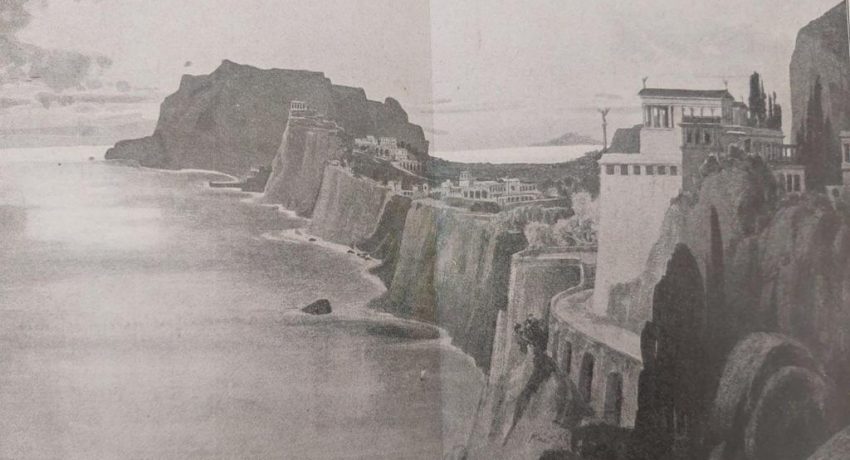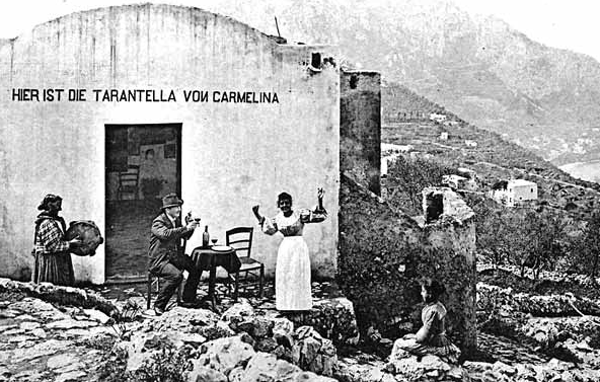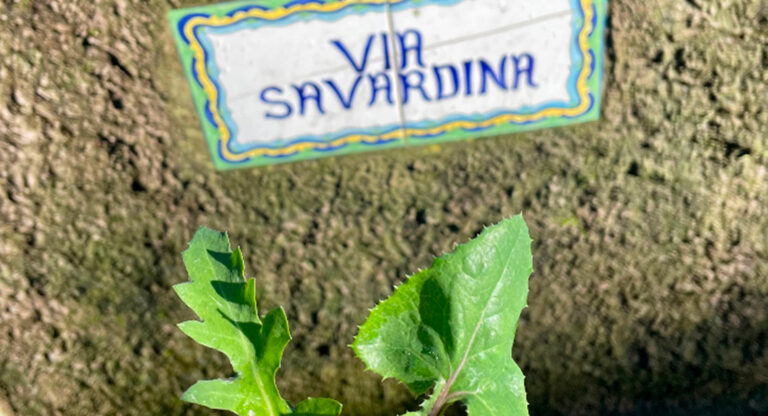

When you sit at the Bagni di Tiberio Restaurant, tasting the dishes made with love by Costanza and looking at the ruins of an ancient roman villa, you can make a journey through the time of taste. Delicacy after delicacy, the palate brings to mind flavors of the past, inspired by the ancient Greek and Roman cuisine.
The wine you would drink here was brought to the isle of Capri from the Greek people, together with the cultivation of vines and olives. Many of our wines are still the fragrant heirs of those vines that have came from the East Europe.
The Bagni di Tiberio restaurant stands today among ancient Roman tanks of opus reticulatum:
in which, during the Tiberian period, fish were raised to prepare Garum.
What the Garum was?
Garum recipe has been handed down to us by the writer Quinto Gargilio Marziale: a liquid sauce based on salted fish with aromatic herbs, poured dropwise on food by wealthy Romans. There were different variations of Garum depending on the fish that were used. The most valuable was the oxygarum prepared with vinegar, pepper and precious spices. A descendant of the delicious Tiberian sauce is the Cetara Anchovy Sauce (colatura di alici), DOP brand since 2020.
Let’s now try to imagine what a Tiberian lunch would have been like on these terraces of the Villa di Palazzo a Mare. To do this we will follow the suggestions of Marino Barendson, gastronomic historian and journalist. The guests would be accommodated on triclinia with three seats, spoons of various shapes and knives at their disposal. No forks.
During the lunch the Romans used to wash very often their hands in bowls with perfumed water. The wine was mixed with honey and diluted with water. It was Tiberius himself who started drinking wine without additions: from this comes his appellation Biberius (Drinkerius), as Tacitus and Suetonius hand down to us.
Today Costanza offers us some refined dishes of the ancient Augustan-Tiberian cuisine.
An example of an imperial luch typical menu
Probably, an imperial lunch would started with a plate of Lucrino oysters and sea urchins, squid meatballs, millet croquettes and spelled polenta would been the side dishes. After all these delights they would arrive to the main dishes: cuttlefish scented with wild Capri herbs and fried mullet giblets (small Capri fish) served with mint sauce, basil and red wine, on the side some wild rockets cultivated by the agronomist Serpullo in mobile greenhouses at Villa Jovis such as in all the imperial residences (Augusto and Tiberio were probably vegetarian).
Always present at banquets: moray soup with white bread and grilled sea bream served with seasonal legumes, sometimes mutton accompained by pomegranate sauce.
To refresh the taste: a basket of cherries and apricots.
Aphrodisiac variations on the theme
Variations on the theme, as the writer Norman Douglas reminds us, are those dishes considered aphrodisiacs: Sybarite-style prawns, snails with spiced sauces and Athenian-style eels.
And which were the desserts? A glass of mead and a cold, local asparagus pie.
In the end of the lunch let’s celebrate all together the ancient custom of the Commisatio.
A guest was chosen to celebrate the food he has just had and everyone at the lunch must toast to him drinking as many glasses of wine as there are letters in his name.
For example: seven cups for Tiberius, five for Livia and so on.
After this dream in the antiquity of the lido dei Bagni di Tiberio we can return now to the sweet reality of the cuisine of Costanza with its scents and colors, a dream that continues.
edited by Renato Esposito







Change at the top of the That’s Amore Capri association: Costanzo Porta new president Changing

Walking in Capri… with “Gatto Bianco” Entering the hall of the Hotel Gatto Bianco,

Preparations are underway for the new edition of That’s Amore Capri, an event that has

The past, present and future of Marina Piccola flow fast, like waves crashing on the

Sitting in the main dining room of La Capannina restaurant, pastel colors reminiscent of the
Power Up Capri-Roma – P.IVA: 09700821219 © 2022. All rights reserved. Design by Power Up Capri